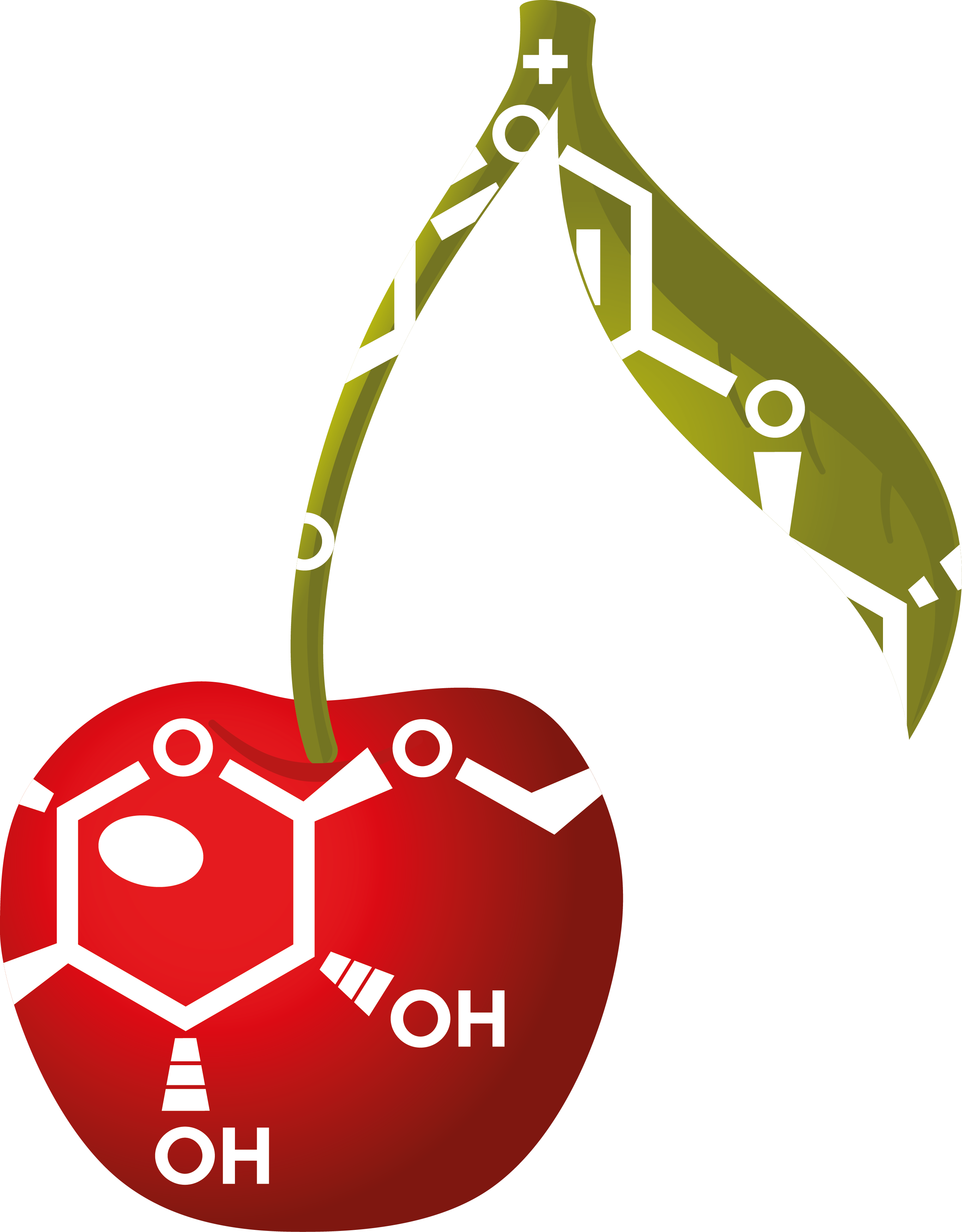Composition of the Defensive Secretion in Three Species of European Millipedes
Authorized Users Only
2011
Authors
Vujisić, Ljubodrag V.
Makarov, Slobodan E.
Ćurčić, Božidar P. M.
Ilić, Bojan S.

Tešević, Vele

Gođevac, Dejan

Vučković, Ivan M.
Ćurčić, Srećko
Mitić, Bojan M.
Article (Published version)

Metadata
Show full item recordAbstract
Three European julid species, Cylindroiulus boleti, Leptoiulus trilineatus, and Megaphyllum bosniense, secrete mixtures of up to 12 different quinones. The major components in these species are 2-methoxy-3-methyl-1,4-benzoquinone and 2-methyl-1,4-benzoquinone. 2-Methoxy-5-methylhydroquinone is detected for the first time in the Class Diplopoda. 2-Hydroxy-3-methyl-1,4-benzoquinone, 2,3-dimethoxyhydroquinone, 2-methyl-3,4-methylendioxyphenol, and 2,3-dimethoxy-5-methylhydroquinone are registered for the first time in representatives of the family Julidae. The similar chemical composition of defense secretions in all analyzed European julids and Pacific spirobolids supports the idea of the chemical consistency of defensive compounds in juliform millipedes.
Keywords:
Millipedes / Julidae / Defensive Secretion / Quinones / NMR / GC-EI-MS / GC-CI-MS / Diplopoda / Julida / Julidae / Cylindroiulus boleti / Leptoiulus trilineatus / Megaphyllum bosnienseSource:
Journal of Chemical Ecology, 2011, 37, 12, 1358-1364Publisher:
- Springer, Dordrecht
Funding / projects:
- Ontogenetic characterization of phylogenetic biodiversity (RS-MESTD-Basic Research (BR or ON)-173038)
- Natural products of wild, cultivated and edible plants: structure and bioactivity determination (RS-MESTD-Basic Research (BR or ON)-172053)
Note:
- Supplementary material: http://cherry.chem.bg.ac.rs/handle/123456789/3589
DOI: 10.1007/s10886-011-0040-3
ISSN: 0098-0331
PubMed: 22101549
WoS: 000298396200010
Scopus: 2-s2.0-84155186342
Collections
Institution/Community
Hemijski fakultet / Faculty of ChemistryTY - JOUR AU - Vujisić, Ljubodrag V. AU - Makarov, Slobodan E. AU - Ćurčić, Božidar P. M. AU - Ilić, Bojan S. AU - Tešević, Vele AU - Gođevac, Dejan AU - Vučković, Ivan M. AU - Ćurčić, Srećko AU - Mitić, Bojan M. PY - 2011 UR - https://cherry.chem.bg.ac.rs/handle/123456789/1235 AB - Three European julid species, Cylindroiulus boleti, Leptoiulus trilineatus, and Megaphyllum bosniense, secrete mixtures of up to 12 different quinones. The major components in these species are 2-methoxy-3-methyl-1,4-benzoquinone and 2-methyl-1,4-benzoquinone. 2-Methoxy-5-methylhydroquinone is detected for the first time in the Class Diplopoda. 2-Hydroxy-3-methyl-1,4-benzoquinone, 2,3-dimethoxyhydroquinone, 2-methyl-3,4-methylendioxyphenol, and 2,3-dimethoxy-5-methylhydroquinone are registered for the first time in representatives of the family Julidae. The similar chemical composition of defense secretions in all analyzed European julids and Pacific spirobolids supports the idea of the chemical consistency of defensive compounds in juliform millipedes. PB - Springer, Dordrecht T2 - Journal of Chemical Ecology T1 - Composition of the Defensive Secretion in Three Species of European Millipedes VL - 37 IS - 12 SP - 1358 EP - 1364 DO - 10.1007/s10886-011-0040-3 ER -
@article{
author = "Vujisić, Ljubodrag V. and Makarov, Slobodan E. and Ćurčić, Božidar P. M. and Ilić, Bojan S. and Tešević, Vele and Gođevac, Dejan and Vučković, Ivan M. and Ćurčić, Srećko and Mitić, Bojan M.",
year = "2011",
abstract = "Three European julid species, Cylindroiulus boleti, Leptoiulus trilineatus, and Megaphyllum bosniense, secrete mixtures of up to 12 different quinones. The major components in these species are 2-methoxy-3-methyl-1,4-benzoquinone and 2-methyl-1,4-benzoquinone. 2-Methoxy-5-methylhydroquinone is detected for the first time in the Class Diplopoda. 2-Hydroxy-3-methyl-1,4-benzoquinone, 2,3-dimethoxyhydroquinone, 2-methyl-3,4-methylendioxyphenol, and 2,3-dimethoxy-5-methylhydroquinone are registered for the first time in representatives of the family Julidae. The similar chemical composition of defense secretions in all analyzed European julids and Pacific spirobolids supports the idea of the chemical consistency of defensive compounds in juliform millipedes.",
publisher = "Springer, Dordrecht",
journal = "Journal of Chemical Ecology",
title = "Composition of the Defensive Secretion in Three Species of European Millipedes",
volume = "37",
number = "12",
pages = "1358-1364",
doi = "10.1007/s10886-011-0040-3"
}
Vujisić, L. V., Makarov, S. E., Ćurčić, B. P. M., Ilić, B. S., Tešević, V., Gođevac, D., Vučković, I. M., Ćurčić, S.,& Mitić, B. M.. (2011). Composition of the Defensive Secretion in Three Species of European Millipedes. in Journal of Chemical Ecology Springer, Dordrecht., 37(12), 1358-1364. https://doi.org/10.1007/s10886-011-0040-3
Vujisić LV, Makarov SE, Ćurčić BPM, Ilić BS, Tešević V, Gođevac D, Vučković IM, Ćurčić S, Mitić BM. Composition of the Defensive Secretion in Three Species of European Millipedes. in Journal of Chemical Ecology. 2011;37(12):1358-1364. doi:10.1007/s10886-011-0040-3 .
Vujisić, Ljubodrag V., Makarov, Slobodan E., Ćurčić, Božidar P. M., Ilić, Bojan S., Tešević, Vele, Gođevac, Dejan, Vučković, Ivan M., Ćurčić, Srećko, Mitić, Bojan M., "Composition of the Defensive Secretion in Three Species of European Millipedes" in Journal of Chemical Ecology, 37, no. 12 (2011):1358-1364, https://doi.org/10.1007/s10886-011-0040-3 . .

